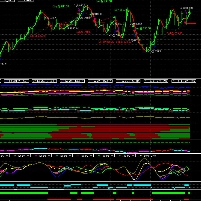How Goldman Sachs Made $100 Million a Day in a Flash
Wednesday, April 28, 2010

Some Wall Street critics believe Goldman Sachs’ list of alleged frauds should include the use of high-speed manipulative trading techniques, some of which may be deemed illegal in the near future by the Securities and Exchange Commission.
Goldman’s use of high frequency trading (HFT) reportedly helped the firm earn $100 million a day on an average of three out of five days during one stretch in 2009.
In traditional stock trading, a broker, or “specialist,” matches buyers and sellers at a price that is satisfactory to both. Generally, a buyer will tell the broker his top price and expect the broker to actually find a seller at a lower price. However, in the age of computerized trading, Goldman Sachs and others can use “flash trading” to send out automated sell offers at higher and higher prices until one comes back with no buyer. The program then drops back to the highest acceptable price and sells at what the buyer set as his maximum limit. This allows Goldman to always obtain the best possible selling price, while the buyer loses the normal give and take of bargaining. In the case of large orders, such as those from pension funds or mutual funds, this can cost the buyers a small fortune.
Strange as it seems, this technology was originally developed (by Max Keiser and Michael Burns) for an Internet-based game, Hollywood Stock Exchange, in order to prevent flash trading. However, the patent ended up in the hands of the investment firm Cantor Fitzgerald, which altered the program to facilitate the practice.
According to Ellen Hodgson Brown, author of Web of Debt: The Shocking Truth About Our Money System and How We Can Break Free. high frequency trading takes place at all hours, even when the New York Stock Exchange is closed—“when stocks are thinly traded and easily manipulated.”
-David Wallechinsky
Computerized Front Running: Another Goldman-Dominated Fraud (by Ellen Brown, Web of Debt)
At Goldman Sachs, It's Mostly $100 Million Days (by Shahien Nasiripour, Huffington Post)
SEC Moves to Ban High-Speed “Flash” Trading (by Noel Brinkerhoff, AllGov)
“High-Frequency” Traders Make Billions Beating Normal Stock Investors to the Punch (by Noel Brinkerhoff, AllGov)
- Top Stories
- Unusual News
- Where is the Money Going?
- Controversies
- U.S. and the World
- Appointments and Resignations
- Latest News
- Donald Trump Has a Mental Health Problem and It Has a Name
- Trump Goes on Renaming Frenzy
- Trump Deports JD Vance and His Wife
- Trump Offers to Return Alaska to Russia
- Musk and Trump Fire Members of Congress






Comments